WeWantMore Collaborates with McDonald’s to Pilot Circular Restaurant Design
Today, WeWantMore reveals the design details for McDonald’s pilot restaurants focused on decor circularity in Carbonne and La Guerche de Bretagne, France. As the brand works to meet its 2050 net zero target, the team commissioned WeWantMore to create a sustainable design for its dining areas.
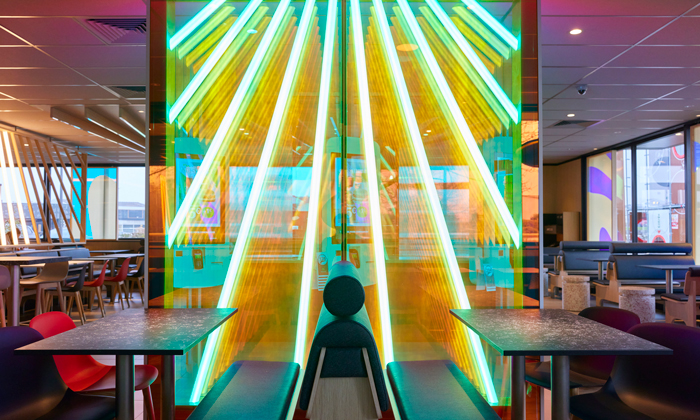
WeWantMore is an Antwerp-based, award-winning design studio that works across Europe and beyond. Its strong design thinking uses authentic storytelling across two disciplines at the highest level: its branding and interior design practices create inspiring projects that challenge the status quo.
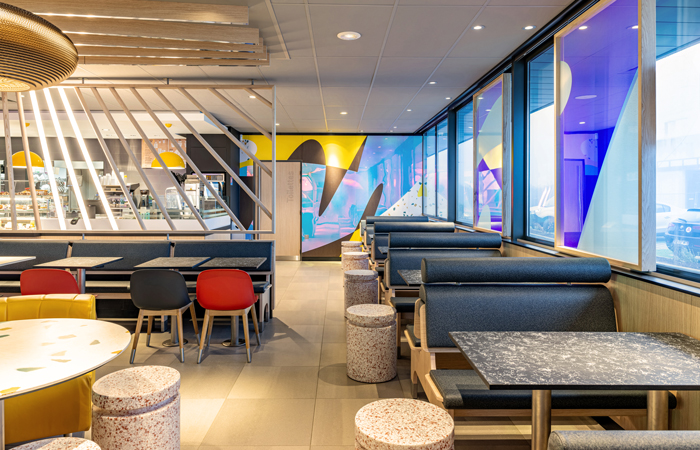
WeWantMore worked closely with McDonald’s to create a dining area experience that would exist not just as a one-off restaurant, but one that could be scaled to other McDonald’s outlets around the world. This was developed by a measurement index together with the sustainability consultancy Anthesis, which tracks the circularity of the company’s global restaurant décor. The sustainable design of the restaurants significantly improves McDonald’s scores on the indicator with a focus on simplicity and disassembly.
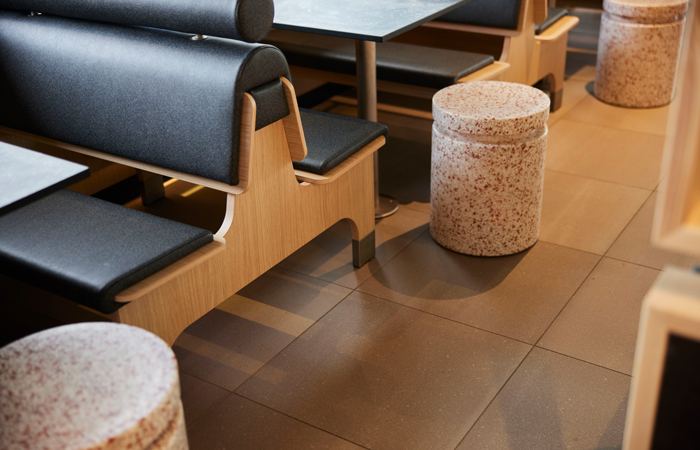
WeWantMore strived to simplify the material palette towards the use of monomaterials and the décor built for this restaurant model can easily be taken apart. Pieces are held together using mechanical fixings, instead of glue, so local teams can more effectively break restaurant features down by raw material type, with the goal of recycling or reusing. This process is more sustainable than the alternative because metals or woods treated with certain laminates or glues are not designed for re-use.
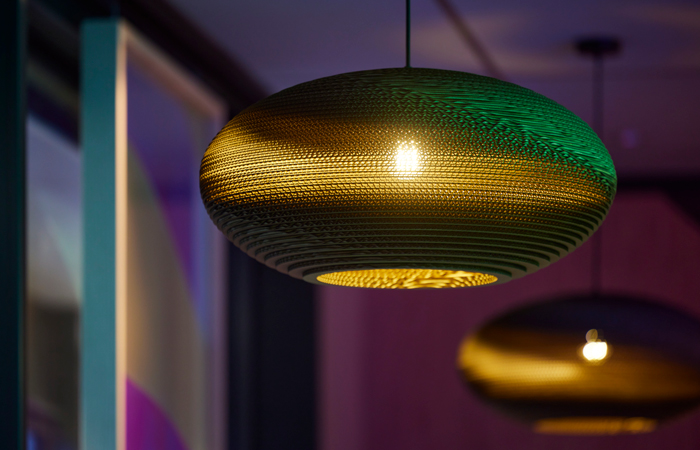
Other important highlights of the new pilot restaurants include:
- Over 80% of the wood used is PEFC certified, from the tree to the restaurant.
- Laminates, which are notoriously challenging to recycle, have been removed from all furniture and décor elements (except for generic service elements such as trash bins and the Happy Meal Merchandiser for the time being).
- Powder coating has also been removed from all furniture and décor elements to facilitate greater reuse of steel components in the future.
- 100% of the plastic used in tabletops and low stools, and at least 80% of the plastic used in chairs, is recycled content.
- All the energy-efficient lighting utilizes reusable fittings with replaceable LED chips.
- The floor is 70% Cradle-to-Cradle certified and the ceiling 100% certified.
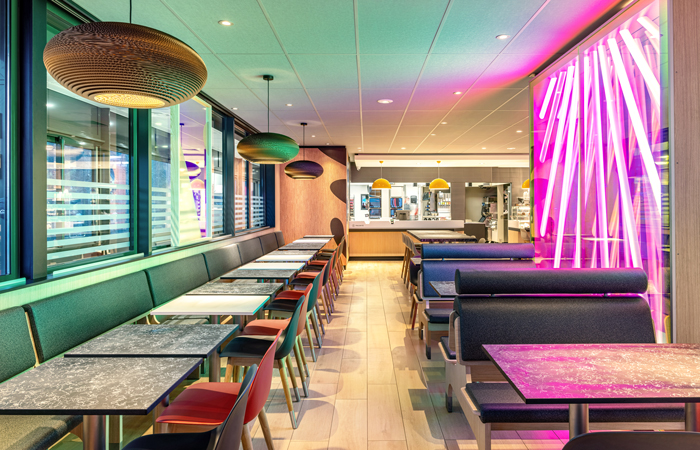
A considered agenda drives every commission for the design and branding agency. As innovators in the industry, the studio has developed a sustainability-based classification system for its material sample library. The goal? To make it easier for interior designers and architects to select sustainable materials and partners in their projects. WeWantMore is missioned to inspire others to innovate and set the bar for future partnerships.
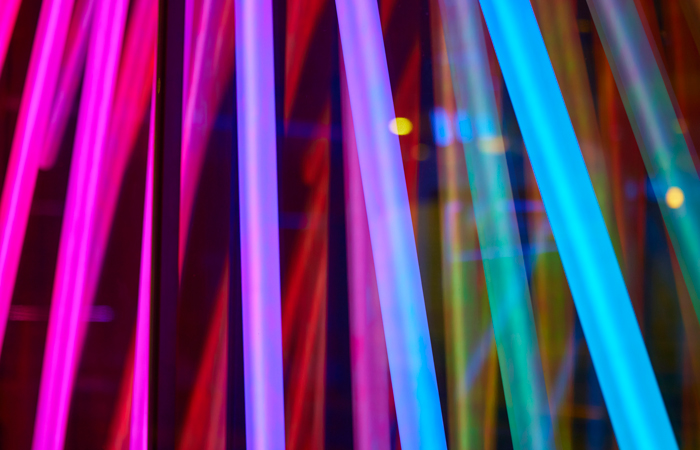
Speaking about the new design, Stephen Douglas, Vice President, Global Restaurant Design at McDonald’s says:
“Our new McDonald’s restaurant design bridges creativity and sustainability through a focus on décor circularity, elevating the way design meets the needs of our customers and employees. Not only does the new décor have a bright, optimistic look, but the circularity principles provide a sunny outlook to the future of how we will be feeding and fostering community.”
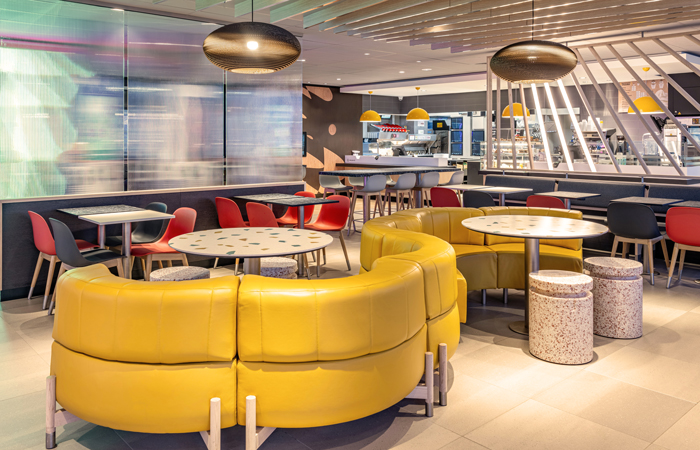
Ruud Belmans, creative director at WeWantMore says:
“With this concept we want to show that sustainable design can be bold and fun and make a huge difference at the same time. The biggest gains were to be found in selecting the right materials and in engineering the furniture and interior features from scratch while simplifying wherever possible.”
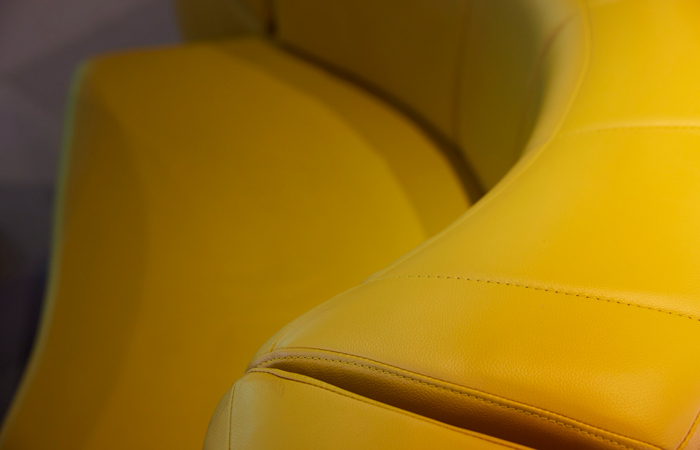
Founded by Ruud Belmans and Thomas Vanden Abeele, WeWantMore has an established reputation for its innovative design direction and a growing network of international clients across the retail and hospitality sectors, including AccorHotels, Neuhaus, and Loop, to name a few. The studio operates at the forefront of a new wave of creatives who blur the boundaries between the junctions of design, art and entertainment, to create intricate work that is comfortable in the context of contemporary design culture.




